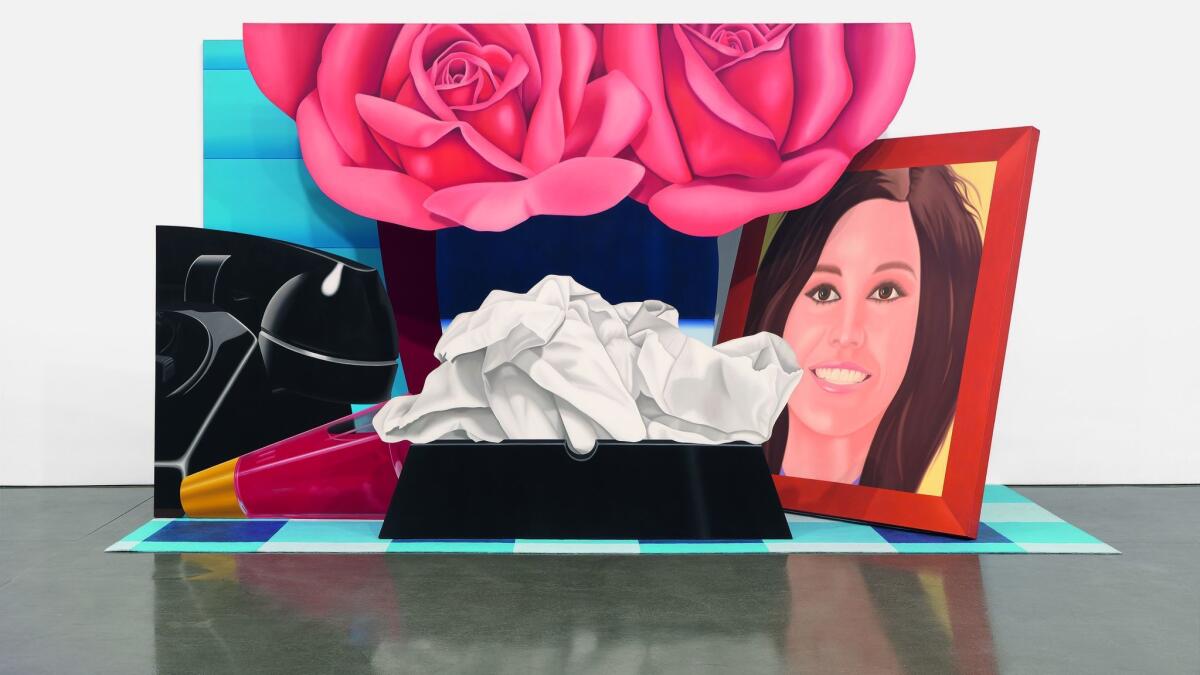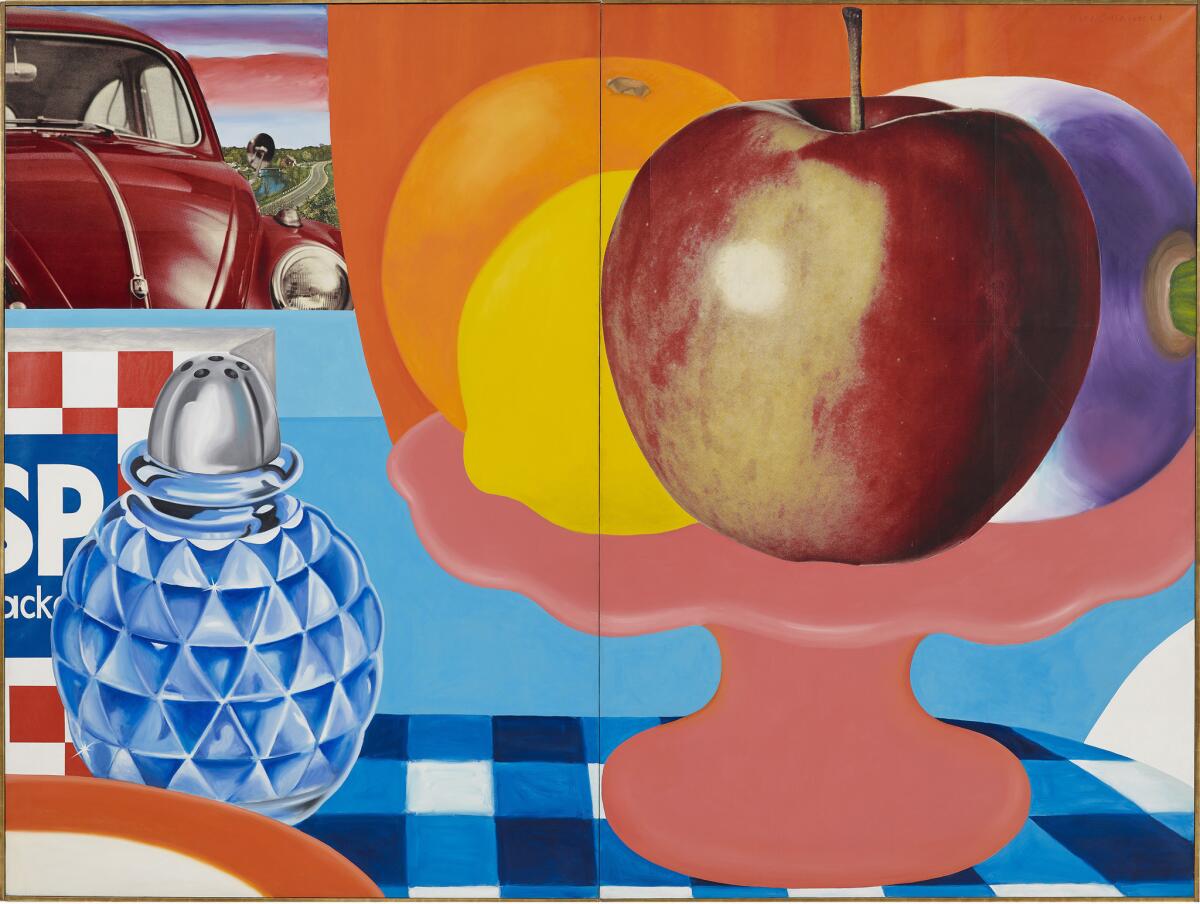Review: See the big picture? How about a really, really big picture? The gigantic still lifes of Tom Wesselmann
- Share via
If you think paintings are about what’s pictured in them, you’ll be happily mistaken when you visit “Wesselmann: 1963-1983” at Gagosian Gallery in Beverly Hills.
The smartly focused survey, made up of seven great paintings and a roomful of small studies, shows Tom Wesselmann (1931-2004) at the top of his game: playing with expectations by setting up situations that go every which way.
His three multi-canvas extravaganzas steal the show, almost. Each makes you feel like a fly on the wall, a kid in a candy shop and an art lover who has just had the rug pulled out from underfoot.



The largest, “Still Life #61” (1976), is nearly 33 feet long and 9 feet high. More important, the four gigantic canvases on which each of its elements has been painted have been bolted together so that they rest on the floor (like a sculpture) and extend nearly 7 feet from the wall (like the backdrop for a play or the set of a movie).
Wesselmann’s gigantic still life seems even bigger because it depicts hand-held objects: a ruby ring, three keys on a metal loop, an unsmoked cigarette and a new toothbrush.
There’s something sexy in the way Wesselmann has painted the billboard-scale stuff: sleek and abbreviated surfaces arranged so that the silhouette of the whole is as complex as a big city skyline — and just as fascinating. His colors are punchy — not luxurious, like they might be in designer items, yet still nuanced, especially where highlights suggest volume or the bristles of the toothbrush are rooted its translucent plastic handle.
Stories are easily imagined. The four objects might be resting, innocently, on a bachelor’s countertop. Or, not so innocently, on the tabletop in a motel room, where a spouse is having an affair.


Intimacy — as well as adventure, romance and just a tinge of danger — figure into all of Wesselmann’s works, whether they depict nothing more than a jar of cleansing cream, a plump orange and a smoldering cigarette, or a box of tissues, a bottle of nail polish, a rotary phone, a portrait of Mary Tyler Moore and a couple of red roses.
In his four wall-mounted pictures, Wesselmann is especially deft with negative space and the power of suggestion. What he leaves out of the picture is as potent as what’s in it.
Best of all, Wesselmann finds beauty in the strangest of places. In “Still Life #59” (1972) he has painted a bunch of crumpled tissues, billowing out of a black plastic canister, as if they were downright sublime.
Gagosian Gallery, 456 N. Camden Drive, Beverly Hills. Through Aug. 24; closed Saturdays and Sundays. (310) 271-9400, gagosian.com
See all of our latest arts news and reviews at latimes.com/arts.
The biggest entertainment stories
Get our big stories about Hollywood, film, television, music, arts, culture and more right in your inbox as soon as they publish.
You may occasionally receive promotional content from the Los Angeles Times.







